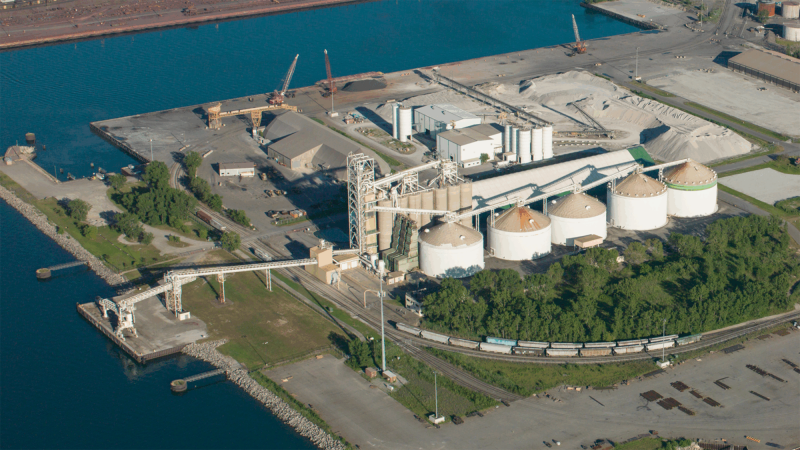A major Midwest agricultural export hub is set for a comeback, as Ports of Indiana announced on Monday that Louis Dreyfus Company (LDC), Rotterdam, Netherlands, will take over operations of its idled grain terminal at the Port of Indiana-Burns Harbor on Lake Michigan.
The agreement will restore an export point that moved more than 500 million bushels of corn and soybeans before ceasing operations in 2023. The terminal, originally opened in 1979, is expected to resume operations under LDC’s management in early 2026.
“We’re very pleased to partner with LDC to revitalize one of the most important agricultural shipping facilities in the state,” said Ports of Indiana CEO Jody Peacock. “Combining LDC’s extensive resources with one of the most robust grain export facilities on the Great Lakes provides critical access to global markets for regional farmers. This is one of only a few places in the Midwest where you can load 1 million bushels of corn onto an ocean vessel for export while simultaneously unloading an 85-car unit train and hundreds of semi-trucks from local farmers.”
Founded in France in 1851, LDC is considered one of the world’s “big four” global agricultural commodities firms. The company operates in more than 100 countries and reported net sales of $50.6 billion in 2024. LDC's longstanding presence in the U.S. includes its large-scale soybean crushing and biodiesel plant in Claypool, Ind. — the nation’s largest fully integrated facility of its kind.
“LDC is excited to join forces with Ports of Indiana, whose commitment to growing the midwestern economy is aligned with our own, long-standing growth journey in the state,” said Gordon Russell, LDC’s U.S. Head of Grains & Oilseeds. “Burns Harbor is well-positioned at the southern shore of Lake Michigan, with access to multiple regional grain markets. The port will be a strategic asset for LDC to expand market access for regional farmers and serve customers in North America and abroad.”
The facility at Burns Harbor offers 7.2 million bushels of storage, access to 16 major railroads through the Greater Chicago market, and the ability to move large volumes via barge, train, truck, and deepwater vessels. The port is the largest U.S. port on the Great Lakes with access to the St. Lawrence Seaway and the U.S. inland waterways system.
“LDC’s extended global network and business portfolio will support export growth and expand our reach across the agribusiness spectrum,” said Burns Harbor port director Ryan McCoy. “This terminal is one of the leading export facilities in the Midwest, with the capacity to load up to 90,000 bushels per hour into an ocean vessel or laker and unload 30,000 bushels per hour from a unit train. LDC’s investment will sharpen its competitive edge and help our region expand its multimodal capabilities and grow global trade.”




